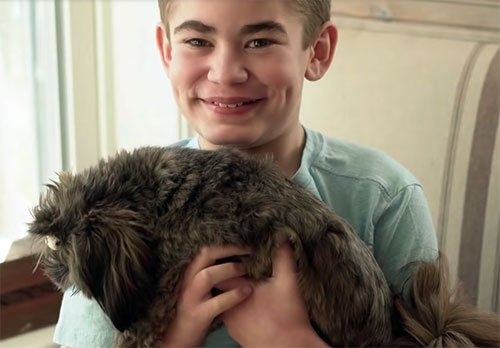When 12-year-old Connor Dobbyn was diagnosed with a rare, fatal genetic brain disease called Sanfilippo Syndrome, his parents thought there was no hope. Then, they learned a promising gene therapy clinical trial could move forward — after it acquired the necessary $3 million in funding. So, they set out to raise the entire amount.
“Our son Connor is an energetic, joyful, and loving 12-year-old. And he’s dying,” Marisa DiChiacchio and Mike Dobbyn wrote of their son Connor, who was recently diagnosed with Sanfilippo Syndrome. The degenerative brain disorder with which Connor was diagnosed is fatal, and as of now there is no FDA-approved treatment available. But, a new gene therapy for Connor’s specific type of Sanfilippo Syndrome — the first treatment of its kind — is currently being researched at the University of Texas Southwestern. It may show promise, but to progress from preclinical stages into a clinical trial, the research needs funding. Aware that this experimental treatment is their only chance at a cure, the family has set out to raise the entire $3 million needed to move the trial forward, asking the world to help them via the crowdfunding site GoFundMe.
Sanfilippo is a genetic condition that, according to the Sanfilippo Children’s Foundation, is a form of childhood dementia. The rare metabolic disorder, which leads to fatal brain damage, is caused by the absence of a specific enzyme that normally breaks down and recycles a molecule called heparan sulphate. Because children with Sanfilippo are missing this enzyme, the molecule builds up in the brain and begins the process of degeneration. As this happens, they will experience the same type of decline often associated with dementia in older adults, similar to Alzheimer’s disease.
“Connor will stop walking, stop talking, stop being able to feed himself,” his mother explained in a fundraising video detailing his diagnosis of Sanfilippo Syndrome Type C. He’ll develop movement disorders and seizures, suffer severe dementia, experience a lot of pain and suffering, and then he’ll die. All in the coming years.”
Glenn O’Neill, president and co-founder of the Cure Sanfilippo Foundation, explained that the disease is underdiagnosed because it typically presents itself like autism. Connor had that exact experience: he was diagnosed with autism at age 5, and three years afterward his IQ drastically declined — from 100 in kindergarten to 60 in third grade, according to his mother.
Researchers have already identified the gene causing this disorder, and have found a way to implant an entirely new one through means of a virus, said Cara O’Neill, chief science officer and co-founder of the CSF. As of late 2019, a review of current pre-clinical and clinical experimental gene therapies for the disease reported that these therapies mostly relied on modified, harmless adenoviruses which delivers a copy of the mutated gene to the central nervous system. Previous preclinical studies have shown that various routes of gene therapy being studied are both safe and effective in halting or preventing the neurodegeneration caused by the disease.
O’Neill added, “The hope is the clinical trial will show the same promise that it’s showing in the preclinical model in children. Otherwise, children with Sanfilippo Type C will have no chance.”
According to Dobbyn’s and DiChiacchio’s campaign, research for this gene therapy has shown in pre-clinical models that it can stop the disease; a clinical trial would then determine whether it will show the same therapeutic benefits in children.
“For many rare diseases, there is not a great deal of interest from large pharmaceutical companies, because they don’t see there being a future financial return,” the couple told Yahoo Australia explaining why their family, supported by Sanfilippo advocacy groups, has taken charge of fundraising.
Type A is the most common and most severe form of the disease, affecting approximately 1 in 70,000 to 100,000 children. Connor’s type affects just 1 in 1.5 million children. The disease money they raise, they say, would support the lab’s final pre-clinical steps, gene therapy drug production for children and the clinical trial costs.
At the time of this writing, the family had raised nearly $350,000 toward a $3 million goal. Connor’s father expressed on the fundraising page that Connor’s only chance was for them to find millions of dollars for a clinical trial he may not even be accepted to, and called the effort a “David versus Goliath” challenge. Connor’s mother stressed that they were operating on borrowed time, as Connor likely doesn’t have many years left. She asking people to consider giving to this cause that will help not only her own son but other families like theirs.
All donations to “Save Connor” go to the nonprofit Cure Sanfilippo Foundation and are to be used for the clinical trial.




